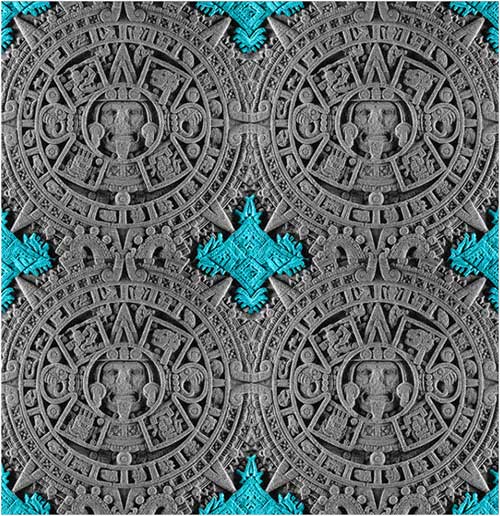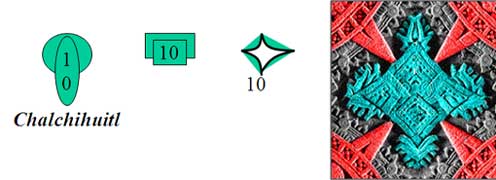
Huitzilipochtli:
Hidden Images of the Aztec Calendarar
|
©2011 Copyrighted by Charles William Johnson |
But, before presenting those innumerable hidden images designed into the ancient artwork of the world, it is fitting to offer a more precise vision of Huitzilipochtli and a possible relationship to the Aztec Calendar. Many authors, such as Elizabeth Boone, state that the Aztec god, Huitzilipochtli was not associated to the calendars of the ancient Aztecs. I beg to differ. When one considers the mythology revolving around the figure of Huitzilipochtli, it is possible to envision the Aztec Calendar as being reflexive of his attributes. Few sculptures or images of Huitzilipochtli have survirved, most of them probably being destroyed during the Spanish Conquest. There is the idea, however, that possibly Huitzilipochtli, the most sacred god of the Aztecs was not rendered into artwork or imagery as much as other gods. 
Man with Bird talons, Huitzilipochtli, Aztec god of sun and war. |
|
 |
By recognizing the central figure of the Aztec Calendar as possibly an imagery of Huitzilipochtli in this manner, I am not saying that the Aztec Calendar is exclusively about Huitzilipochtli. One thing that I have avoided in my writing is to wage a scholastic war that a particular piece of ancient artwork has a specific, exclusive meaning. My understanding from studying the ancients is that a particular piece of artwork may symbolize many different aspects. It may have many different meanings and often does. I believe this to be the great wealth of ancient thinking expressed in ancient artwork. When I first began my studies, professor Rubén Bonifaz Nuño asked me whether the central human face in the Aztec Calendar was the Sun or the Moon, which one did I consider it to be?, he asked me.. I remember my answer back then, nineteen years ago, and it is still the same answer today. The central human face of the Aztec Calendar may be both, either the Sun or the Moon, it depends upon how it is viewed in relation to the other elements within the calendar itself. And, one may also add that it may be a representation of the Aztec god Huitzilipochtli as illustrated here. |
|
The design of the Aztec Calendar, in my mind, reflects this very idea, a specific design element in the Aztec Calendar can have multiple, nay, infinite meanings depending on how it is related to the other elements in its design. The design of the Aztec Calendar in my view is open-ended and requires the viewers to assign the meanings. The calendar is not sculpted with a specific meaning for each particular design element forever or for only a single restricted use. Just as the central human face may represent the Sun, the Moon, Huitzilipochtli, Venus and so forth, the other design elements may represent varied meanings: days, weeks, months, years, bundles, cycles [117, 693, 819, 1872000 days], the precession, different years [360, 364, 365, 260 days], and so on. Although the Aztec Calendar appears at first glance to have each design element representative of a given meaning, reflecting a specific task, it would appear that there is a flexibility in meaning for each element. The bundles do not only count the days, time, but also particular things, such as food stuffs, metal, etc. The Aztec Calendar may be employed to reckon time or, to simply count things [space]. |
There are at least three ways to render the number 10 in ancient Aztec glyphs as shown, according to Boone. The first round figure is easily recognizable on the Aztec Calendar as it occurs many times on the concentric circles. The second figure appears but in slightly modified variations in the four worlds and in the enclosed 13-Acatl glyph at the top of the calendar’s circular border. The third figure appears as the shape of the body/back of the hummingbird in the hidden image illustrated in this study. Ten may be understood to be fractally unit one. |
1992-2011 ©Copyrighted by Charles William Johnson. All rights reserved Reproduction prohibited.
| Home | Books | Forum | All Essays | Author |


